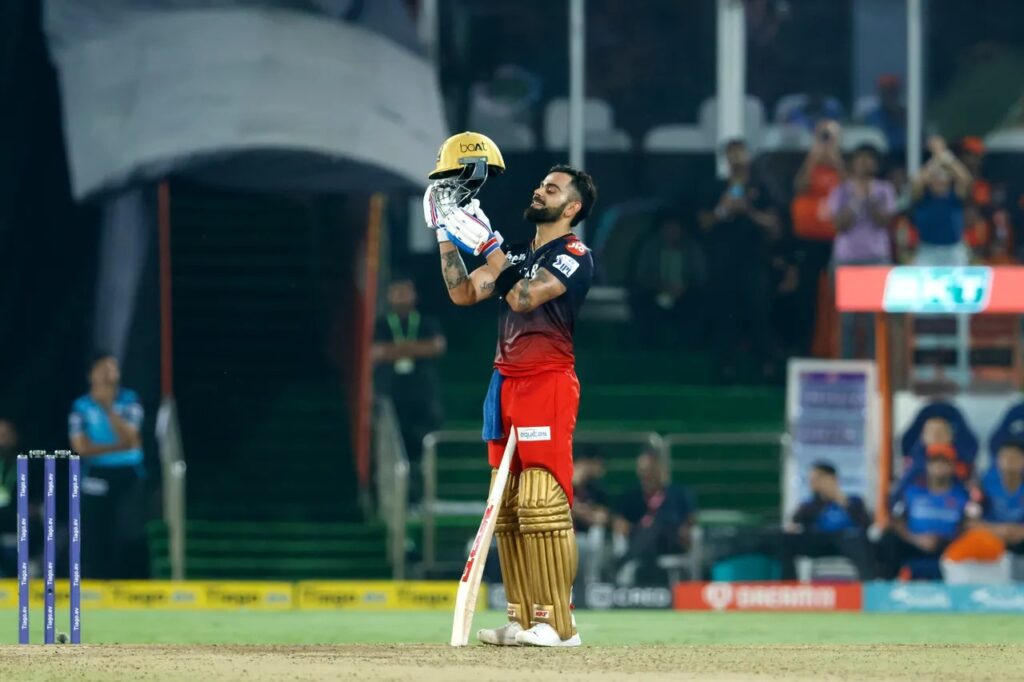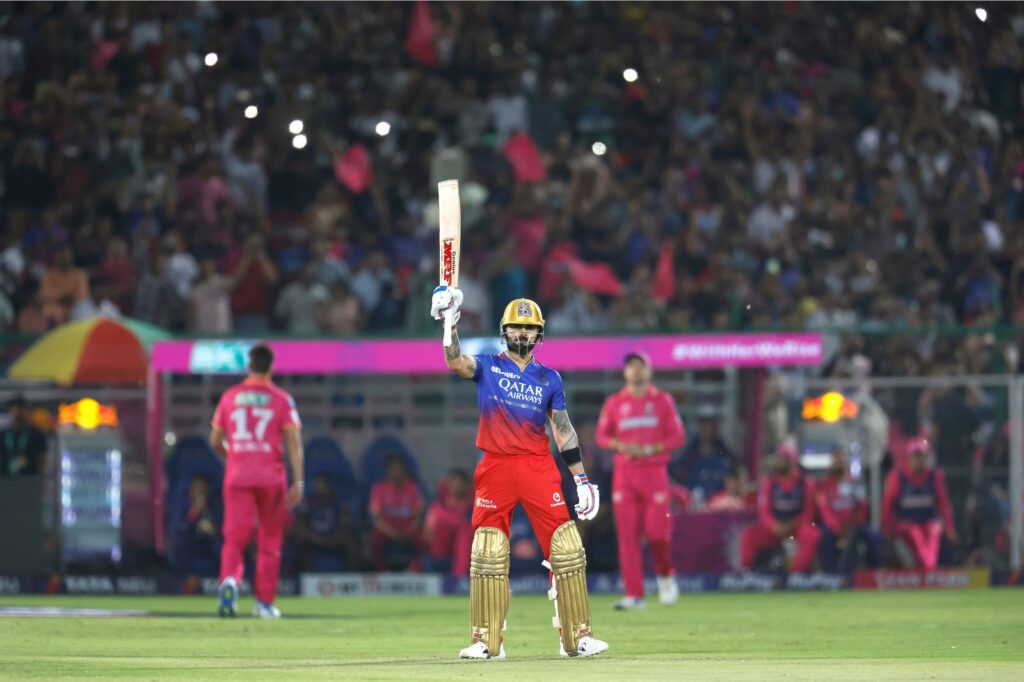
Is Virat Kohli’s strike rate good enough to get him into the Indian side for the upcoming ICC T20 World Cup? Right through the ongoing IPL 2024, this has been an often-repeated theme in the Indian cricketing landscape. After Kohli cracked his eighth ton in the IPL, against Rajasthan Royals, social media was once more abuzz with question marks over his strike rate.
Is it valid to put Kohli’s strike rate under scrutiny? Is it right to blame him for the loss in Jaipur? Is there a chink in Kohli’s method for the shortest format? Will it affect India’s chances in the mega event? Let’s try to examine each and every question.
In Royal Challengers Bengaluru’s previous outing, Kohli’s strike rate was around 157. He also scored 61.74% of the runs accumulated by his side. Basically, if you deduct the extras, the rest of the RCB batters aggregated a meagre 59 runs off 48 deliveries. The track also was a tad two-paced during RCB’s innings. Subsequently, in the second innings, the dew made its presence felt. From that perspective, it is harsh to hold one player accountable for the defeat.
Having said that, there are small cracks in Kohli’s T20 game. He isn’t exactly known for upping the ante while facing the tweakers. Even in the just-concluded IPL game, he had to wade through a few tricky phases, with the experienced spin duo of R Ashwin and Yuzvendra Chahal restricting Kohli and Faf du Plessis’ scoring areas. The hypothesis can be further evidenced by the fact that RR added 98 runs between overs seven to 15, while RCB could muster 76 in that period of play.
Incidentally, even in last year’s IPL, Kohli’s strike rate versus spin during the middle phase of the innings was hovering around just 110. The heart of Kohli’s issues against spin is he doesn’t explore different parts of the ground. While facing spinners who take the ball away, especially left-arm orthodox spin, Kohli is reluctant to skip down the track. Sweeps and reverse sweeps aren’t his go-to shots either.
There was another scoring pattern that caught the attention during the RR-RCB game. After 15.5 overs, Kohli was on 87 off 57 deliveries. Over the next 10 balls, Kohli collected only 13 runs, eventually reaching the coveted three-figure mark. In his defence, Kohli did attempt a few cuts and whips, but just couldn’t chart out a way while up against some disciplined bowling. The duet of Ashwin and Chahal showcased bowling smart by employing a defensive lines. Meanwhile, Nandre Burger, the fast bowler, blended into-the-wicket bowling with low full tosses.
To sumarise the above descriptions, a couple of nuts and bolts are missing in Kohli’s game in the slam-bang format, and that is getting magnified by the failure of the rest of RCB’s batters. The bowling unit of RCB has also been largely under par.
What about the bigger picture? Does Kohli deserve a place in the starting XI for the World Cup? The answer lies in Kohli’s ability to soak up big-match pressure. In the past, he has propped up India’s innings on enough occasions in T20 World Cups. In especially a major tournament, any think tank would bank on game-breakers to find the right gears. To still throw in a word of caution, India would require one of the other batters to press the accelerator pedal in the middle overs, a phase where a missing piece or two in the Kohli-batting-jigsaw act as a hurdle.
Grand opening of #Maidaan! A film that resonates the story of an unsung hero of Indian football, Syed Abdul Rahim, the coach who led India to Asian Glory.
We celebrate team Maidaan as we do, let’s listen to their story of making the film and the experiences the crew gathered in… pic.twitter.com/oKwzVCOlMx
— RevSportz (@RevSportz) April 10, 2024




